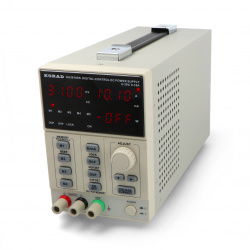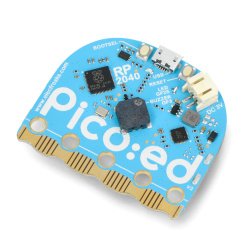Until recently, electronic car diagnostics could be performed mainly in specialized car workshops. This resulted, because of the rare availability of diagnostic equipment, which was very expensive. Currently, each driver can independently check the condition of all the most important components of the car, including the engine, electrics and braking system. Early detection of a defect in most cases allows to reduce the costs of a potential repair and improves the safety of using the vehicle. The most popular standard in the field of car diagnostics is OBD II, or On-Board Diagnostic level 2. It is an interface used today in almost every car produced in series for over 20 years. OBDI interface was developed in the early '90s as a requirement of the California government. The aim of introducing a single standard was the possibility of a quick diagnosis of a defect which may result in the increased emission of substances harmful to the environment by the car. OBDII is an extension of the standardization of diagnostic connectors, which appeared in the USA as mandatory in 1996. In the European Union, it was first introduced as a standard for gasoline engines in the early 2000s. Most often, the OBD2 connector is located under the steering column, next to the fuse board. The OBD2 standard was introduced gradually, therefore it happens that some older cars can support this standard, even though the manufacturer was not legally obliged to introduce it.
Automotive diagnostics
ELM327 Mini - OBD2 Bluetooth diagnostic interface
OBD2 diagnostic interface can be used in most European , Japanese and American cars. It is equipped with Bluetooth 2.0 communication module, which allows for wireless...Diagnostic interface - HH OBD Bluetooth scanner - advanced
A scanner used in car engine diagnostics . It is used to verify the work parameters of the vehicle's power unit both in a professional workshop and in a garage. The product...See also
What can you check with electronic car diagnostics?
The most important advantage of OBDII is the ability to quickly read the engine error code, which makes it much easier to order a repair or remove a defect yourself. You can also clear the errors before or after the repair. Clearing a bug after repairing is fairly straightforward, but it can also be useful before repairing. For example, in some cars, some faults are caused by the engine going into emergency mode - then the engine runs at a speed not exceeding 2000 RPM. Clearing a bug may allow us to exit Safe Mode if the bug does not restart it. This is a useful advantage especially when we are on vacation far from our hometown and finding a mechanic on-site can be problematic or very expensive. In addition to engine diagnostics, we can read the data, thanks to which we will be able to further refine economical driving. We then gain access to a very extensive onboard computer, which will allow us to read the instantaneous fuel consumption, or in the hourly cycle, average fuel consumption, the fuel pressure in the injection system, the functioning of the lambda probe, engine temperature and other parameters. The reading of individual parameters depends on the car and the software used. Of course, for the whole operation to be possible, we need two things: software and a diagnostic scanner in the OBD2 standard. Most scanners work with the ELM327 chip. We have USB, Bluetooth and WiFi scanners to choose from. The principle of operation in each of them is similar, only the way of connecting with our devices is different. The more expensive models are often more stable and have automatic shutdowns. The automatic switch is useful if you want to place the scanner permanently in the car, then there is no risk of discharging the battery. On the other hand, with everyday use of the car, such a risk is negligible, because the power consumption of the scanner is minimal.
Onboard Diagnostics 2 operating software
Polish engineers have developed a universal SDPROG diagnostic software in Polish for Windows, Android and iOS. The application can be used simultaneously on 3 different devices: PC, tablet and phone. To use the software, you need an OBDII interface, such as the Vgate series OBDII interfaces offered by the Botland store. SD PROG software enables, among others reading the cause of the Check Engine light, reading codes: saved, pending, permanent, generic and specific for a given manufacturer; obtaining additional repair instructions as well as clearing fault codes. The application also helps the user to find the fault and remove it more efficiently, e.g. will indicate: possible causes of the failure, reasons for the error code, possible symptoms of the failure, distance travelled since the Check Engine light came on, the time since the fault codes were cleared, and the time since the Check Engine light came on. Besides, the application allows you to monitor measurements from individual sensors in the car, such as engine temperature sensors, the air in the intake system, accelerator pedal position, voltage in the electrical system, turbocharger boost pressure, lambda voltage, ignition timing and many other parameters.



















































































































































































































































































































































